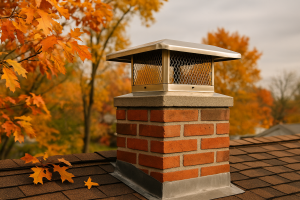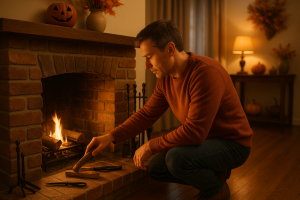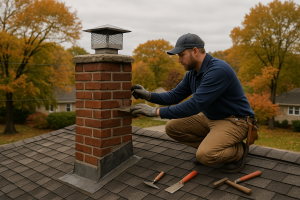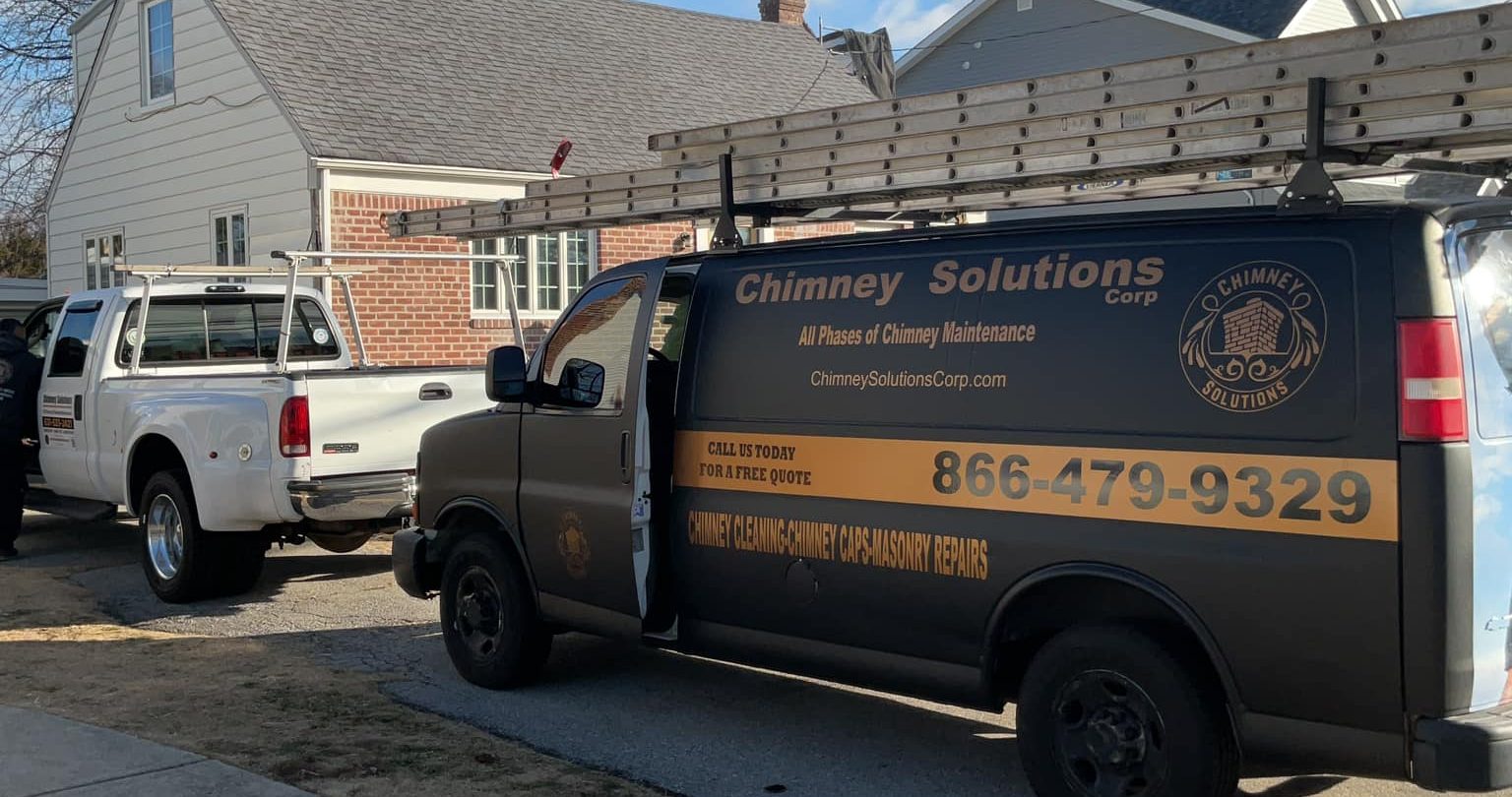Understanding the Costs of Chimney Repairs: What Homeowners Need to Know
Whether your chimney is showing signs of wear or you’re planning ahead for seasonal maintenance, understanding the cost of chimney repair is essential. From minor cracks to structural damage, chimney issues vary widely—and so do their price tags. This guide will walk you through chimney repair costs, what affects pricing, and how to make smart decisions that protect your home and wallet.
Why Chimney Repairs Matter
Chimneys do more than vent smoke—they help maintain air quality, heating efficiency, and protect your home from carbon monoxide leaks. But when creosote buildup, cracks, or water damage occur, repairs become necessary to avoid fire hazards, soot buildup, and other potential issues.
What Is the Average Cost of Chimney Repair?
The average chimney repair cost in the United States ranges from $150 to over $3,000, depending on the type of repair needed. A small crown repair might cost just a few hundred dollars, while a chimney rebuild could be several thousand.
Factors That Affect Chimney Repair Costs
Several key factors determine the overall cost of a chimney repair. Understanding these variables helps homeowners make informed decisions and plan for potential expenses.
- Extent of Damage: Repairs range significantly based on severity. Minor cracks in mortar joints or slight wear to the crown may only require simple sealing or repointing, while extensive damage—such as a collapsing chimney stack or compromised flue—may necessitate full structural rebuilds. The more compromised the chimney structure, the more labor, equipment, and materials are needed.
- Chimney Type: The design and construction of your chimney play a major role. Brick chimneys tend to be more labor-intensive and costly to repair due to masonry work, while prefabricated metal chimneys may involve fewer materials but require specialized knowledge or parts, especially for older or discontinued models.
- Height & Access: Repairs on tall chimneys or those located on steep or complex roofs often require additional scaffolding, safety equipment, or even crane rentals. These access difficulties can significantly increase labor cost and time spent on the job, especially in multi-story homes or tight urban spaces.
- Material Availability: The price and sourcing of materials such as clay flue tiles, masonry sealants, or custom chimney caps can shift based on supply chain issues or regional availability. Choosing high-quality materials that meet current building codes may cost more upfront but help reduce the need for future repairs.
- Local Labor Rates: Pricing can vary widely based on location. Areas with higher costs of living or strict permit requirements may experience elevated labor rates, even for standard chimney repairs.
- Urgency of Repair: Emergency or peak-season repairs—particularly during winter or just before the holidays—often come with rush fees due to scheduling constraints and increased demand.
- Permit Requirements: Some municipalities require building permits for extensive repairs or structural modifications. These permits can range from $100 to over $300, depending on the complexity of the work and local codes.
- Associated System Damage: If chimney damage has led to issues in related systems—like the fireplace damper, smoke chamber, or adjacent roofing components—repair costs can increase as additional components may need to be fixed or replaced.
Common Chimney Repairs and Their Price Ranges
Understanding the common chimney repair costs can help you prepare.
- Chimney flashing: $200–$500
- Flue tile replacement: $700–$2,000
- Chimney crown sealing: $150–$400
- Brick chimney repair: $300–$1,500
- Waterproof sealant application: $150–$400
Chimney Cap & Crown Repairs
A well-maintained chimney crown prevents water infiltration, debris buildup, and protects against harsh weather conditions. If cracked, it can lead to extensive damage and leaks. Chimney cap installation adds extra protection and typically costs less than $500.
Chimney Liner Costs
Your chimney liner is a critical component of safe chimney operation. Clay tile liners are common, but steel liners are more durable and expensive. Expect to pay anywhere from $900 to $3,000 for chimney liner replacement depending on the material costs and chimney length.
The Importance of Regular Maintenance
Regular chimney maintenance such as cleanings and annual chimney inspections can catch minor issues before they become costly repairs. Prevention is often cheaper than a major repair or entire flue liner replacement.
Water Damage: A Hidden Repair Cost
Water is one of the most destructive forces your chimney can face, and it’s also one of the most overlooked. While a small stain on the ceiling or a musty smell might seem minor, these symptoms often trace back to chimney leaks that have gone unnoticed for months.
Structure from water damage can lead to:
- Rotted wood framing around the chimney or in the attic
- Warped or crumbling drywall in interior walls and ceilings
- Mold growth that can impact indoor air quality and require professional remediation
- Efflorescence (white salt deposits) on brickwork—a clear sign of moisture intrusion
- Freeze-thaw damage, where absorbed water expands and cracks masonry in cold weather
Water usually enters through vulnerabilities like cracked crowns, deteriorated mortar joints, missing flashing, or uncapped chimneys. Over time, this infiltration doesn’t just affect the chimney itself—it spreads into the surrounding roofline, insulation, and structural supports, compounding the cost of repairs.
In some cases, homeowners end up needing not only chimney masonry repairs, but also roof repairs, interior restoration, and mold mitigation—adding thousands of dollars to the total cost if not caught early.
Installing a chimney cap, maintaining the crown seal, and applying a breathable waterproof sealant are cost-effective ways to prevent this kind of damage. Regular chimney inspections can also identify water-related vulnerabilities before they escalate.
🔗 For more on water damage prevention, refer to the National Fire Protection Association (NFPA).
Creosote Buildup and Soot Damage
Creosote accumulation and buildup of soot inside the chimney is a leading cause of chimney fires. Regular chimney cleaning—costing about $150 to $350—can reduce fire risk and improve heating efficiency.
Minor Repairs vs. Major Fixes
Chimney repairs fall into two categories: minor fixes that address surface-level wear and major repairs that involve structural correction. The distinction between the two has a direct impact on both cost and urgency.
Minor repairs are typically preventative or cosmetic and include:
- Repointing mortar joints to seal small cracks
- Replacing chimney caps or sealing crowns
- Applying waterproof sealants to prevent moisture intrusion
- Repairing flashing to eliminate leaks at the roofline
These are generally low-cost, ranging from $150 to $800, and can often be completed within a day by a qualified technician.
Major fixes, on the other hand, involve structural or deep-system work, such as:
- Full chimney rebuilds due to severe deterioration or collapse
- Replacing entire flue liners or smoke chambers
- Reconstructing chimney foundations
- Addressing internal damage from years of water infiltration, fire, or neglect
These projects require scaffolding, permits, skilled masonry labor, and strict adherence to building codes—often resulting in costs ranging from $3,000 to over $10,000, depending on size and complexity.
Delaying minor repairs can often lead to the need for major reconstruction, making early detection through regular chimney inspections crucial for keeping costs low.
Structural Damage and Rebuilds
When the chimney structure is compromised—through poor construction, extreme weather, or years of neglect—a full chimney rebuild may be the only solution. These repairs can exceed $10,000.
Labor Costs and Regional Variations
Labor costs vary by region, with urban areas often charging higher additional labor rates. Permits and building codes can also add to the bill, especially for exterior chimney repairs in historical districts or multi-story homes.
Professional vs. DIY Chimney Repair
While DIY home repairs can save money in some areas, chimney repair is rarely one of them. The chimney is a critical safety system in your home, and even small mistakes can have serious consequences.
Risks of DIY Chimney Repair:
- Incorrect materials or poor workmanship can lead to structural instability
- Improper flue or liner installation can cause carbon monoxide leaks
- Missed creosote buildup or cracks can result in chimney fires
- Inadequate sealing or flashing can cause water damage and mold growth
- Most homeowners lack the tools, training, or permits required for code-compliant work
What may start as a small DIY project—like patching mortar or applying sealant—can unintentionally mask deeper damage or violate local building codes, leading to costlier repairs down the line.
Why Hire a Professional:
- Licensed chimney professionals understand building codes, safety standards, and repair best practices
- They use specialized tools for flue inspections, masonry repairs, and liner installations
- Professionals carry liability insurance and can provide warranty-backed repairs
- Issues are properly diagnosed, reducing the risk of recurring problems or hidden hazards
For any repairs involving the chimney structure, liner, crown, or draft system, hiring an experienced, CSIA-certified chimney technician ensures both safety and long-term cost efficiency.
🔗 Visit the Chimney Safety Institute of America (CSIA) to verify credentials and find certified professionals in your area.
Understanding Permits and Codes
Some repairs require building permits, especially for structural changes. These can cost $100–$300 depending on your municipality. Your chimney repair contractor should be familiar with current safety standards and construction permits.
When to Repair vs. Replace
If your chimney is over 50 years old and shows signs of severe damage, a chimney replacement may be more cost-effective than repeated partial repairs. Signs include loose bricks, flue damage, or a collapsing chimney stack.
Emergency Repairs and Peak Season Pricing
Winter storms can lead to emergency chimney repairs. During peak season, prices may rise due to demand and weather delays. To avoid premium pricing, schedule your chimney inspection during off-peak months.
Choosing the Right Chimney Repair Company
Look for:
- Licensed, insured chimney professionals
- Positive reviews and BBB accreditation
- Transparent detailed estimate and timeline
- Expertise in both chimney sweep services and masonry issues
Budgeting and Financing Options
If the quote exceeds your budget, ask about emergency home repair financing or installment plans. Breaking large repairs into staged jobs (e.g., chimney repointing first, flue liner next) can ease the financial burden.
Final Thoughts: Protecting Your Investment
A well-maintained chimney doesn’t just function better—it saves you money, keeps your family safe, and supports your home’s value. Whether you’re managing minor damage or planning for a full chimney repair project, working with professional services and staying ahead of issues is the best strategy.



